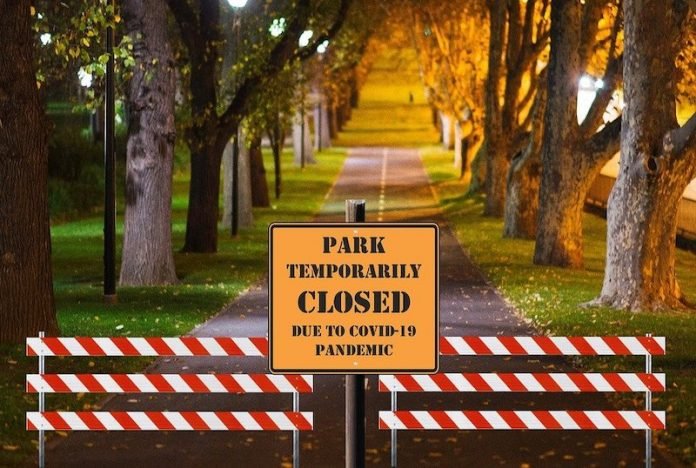
In a new study, researchers found that lockdowns at the start of the COVID-19 pandemic may have been the most important factor in reducing the ultimate spread of the disease in the United States.
The research was conducted by a team from Rice’s Baker Institute for Public Policy and elsewhere.
In response to the pandemic, all states this spring enacted policies intended to “flatten the curve” and prevent the spread of COVID-19.
Some states enforced strict lockdowns, while others remained relatively open and imposed few restrictions on residents.
In the study, the researchers examined the link between COVID-19 restrictions and deaths.
Unlike other studies, they considered the possibility that restrictions imposed early in the pandemic could have long-lasting impacts that might not become evident until several months later.
The researchers measured the “openness” of states using an index developed by WalletHub, which scored states based on a range of restrictions, such as requirements to wear masks in public, reopening of restaurants and bars, and guidance for assisted living facilities.
WalletHub re-scored states nine times between May 5 and Oct. 5 as their restrictions changed.
Daily deaths per million (DDPM) by state between March 1 and Nov. 1 were calculated using data from the Johns Hopkins Coronavirus Resource Center and the U.S. Census Bureau.
The researchers graphed correlations between the openness indices for the 50 states and DDPM every day from March to Nov. 1.
For example, the correlation between the openness of states on June 9 and their reported deaths per capita on Oct. 29 was 0.69, the highest value in the sample.
During the initial phases of the pandemic, the researchers found a strong negative correlation between DDPM and openness.
The higher a state’s DDPM in March and April, the more likely the state was to adopt strict restrictions by May 5.
In the second half of May, the correlation between DDPM and openness began to flip. By October, the researchers found a strong positive correlation between DDPM and openness.
In fact, since July, the correlation between DDPM and openness has not only remained positive but also strengthened, the researchers say.
A surprising finding was that the May 5 state openness levels remained the most strongly correlated scoring period with DDPM more than five months later.
As of Nov. 1, the dominance of the May 5 openness level was fading. However, it wasn’t yet clear which, if any, of the periods would emerge with the strongest correlation.
The researchers found that the correlation between openness and daily deaths is strongest for restrictions in place on May 5.
That is, the correlation between state openness and deaths was generally the most negative through early July, then generally became the most positive through the end of the study period.
This distinction highlights the importance of initial conditions: Early lockdowns are most closely associated with reduced death rates later in the pandemic.
One researcher in the study is Mike Saletta.
Copyright © 2020 Knowridge Science Report. All rights reserved.



